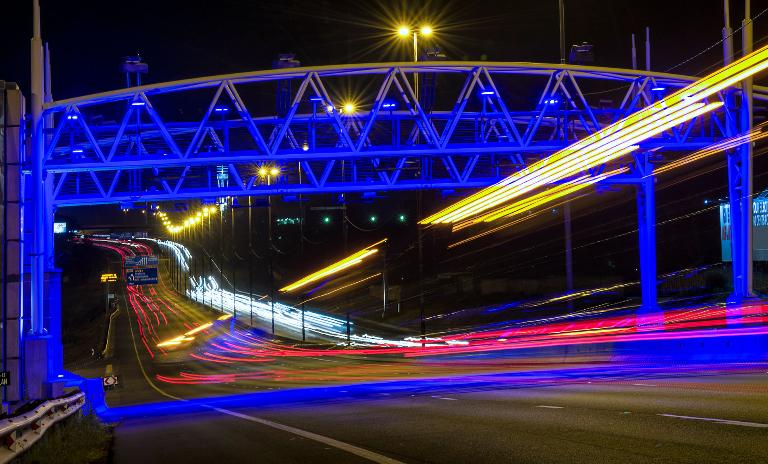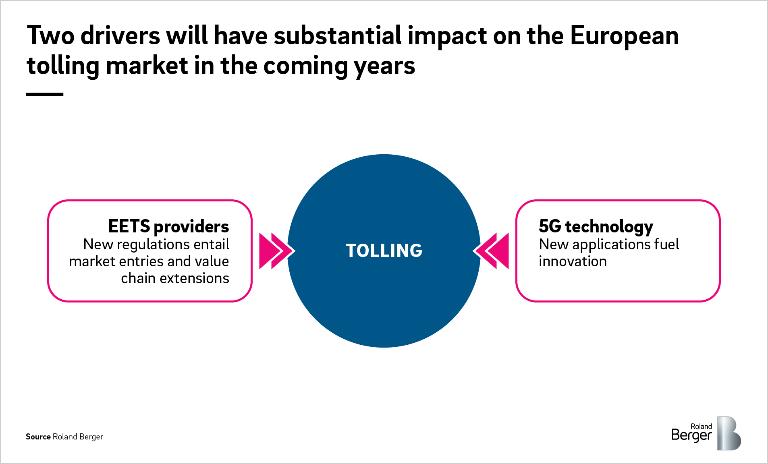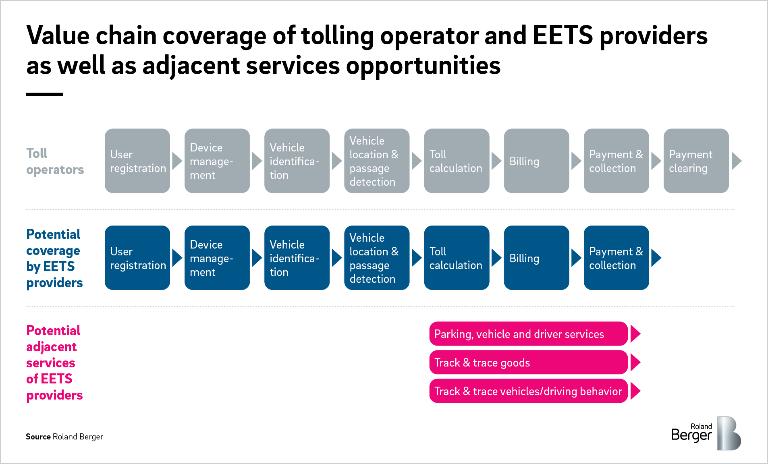Greater efficiency with 5G and the EETS
The toll road market is currently ready for a change. This is mainly due to the high administrative cost ratio faced by the big national toll road operators in Europe, where admin costs are fixed cost heavy and are also growing faster than the rate of revenue development. Added to this is the fact that the traditional business model of toll road operators encompasses the entire toll road value chain, from user registration to the management of on-board units to vehicle detection, toll calculation and payment collection. Yet this very fact discourages providers from specializing in individual elements of the value chain, and this in turn has a negative effect on market dynamics and efficiency.
We have identified two market drivers that have the potential to change the toll collection market for the better.
First there is the legal framework, which is facilitated by the European Electronic Toll Service (EETS). EETS ensures the interoperability of all existing and future toll systems throughout the
road network
of the European Union and aims to realize a system where all tolls are paid on the basis of only one contract and one on-board unit. It also helps bring road traffic increasingly into the information society by integrating real-time information from other telematics services. This can enables optimization of route planning, vehicle and cargo tracing etc..
Furthermore, the new regulatory changes allow EETS providers to focus on specific elements of the value chain in multiple countries, which has a positive effect on efficiency and market dynamics.
Second, we expect there to be a change in mobile communications following the deployment of 5G. The original collection systems of tolls based on GPS and DSRC technology runs in a special-purpose infrastructure which is only dedicated for toll collection with significant capital investments and fixed cost. The implementation of 5G technology holds two major advantages here: 5G technology can serve multiple application including toll services which allows sharing capital investments and providing reduced fixed cost advantages. Moreover, it will reduce latency and increase bandwidth. This will enable reliable communication in real time, something that will be essential for future
autonomous driving technology
, among many other things.
There is a clear trend towards services being bundled on a single platform. This is in fact desirable from the user's perspective, too, as it reduces the level of complexity involved in using the services while also increasing the functional value added.
![{[downloads[language].preview]}](https://www.rolandberger.com/publications/publication_image/roland_berger_publication_02_fallback_download_preview.png)










